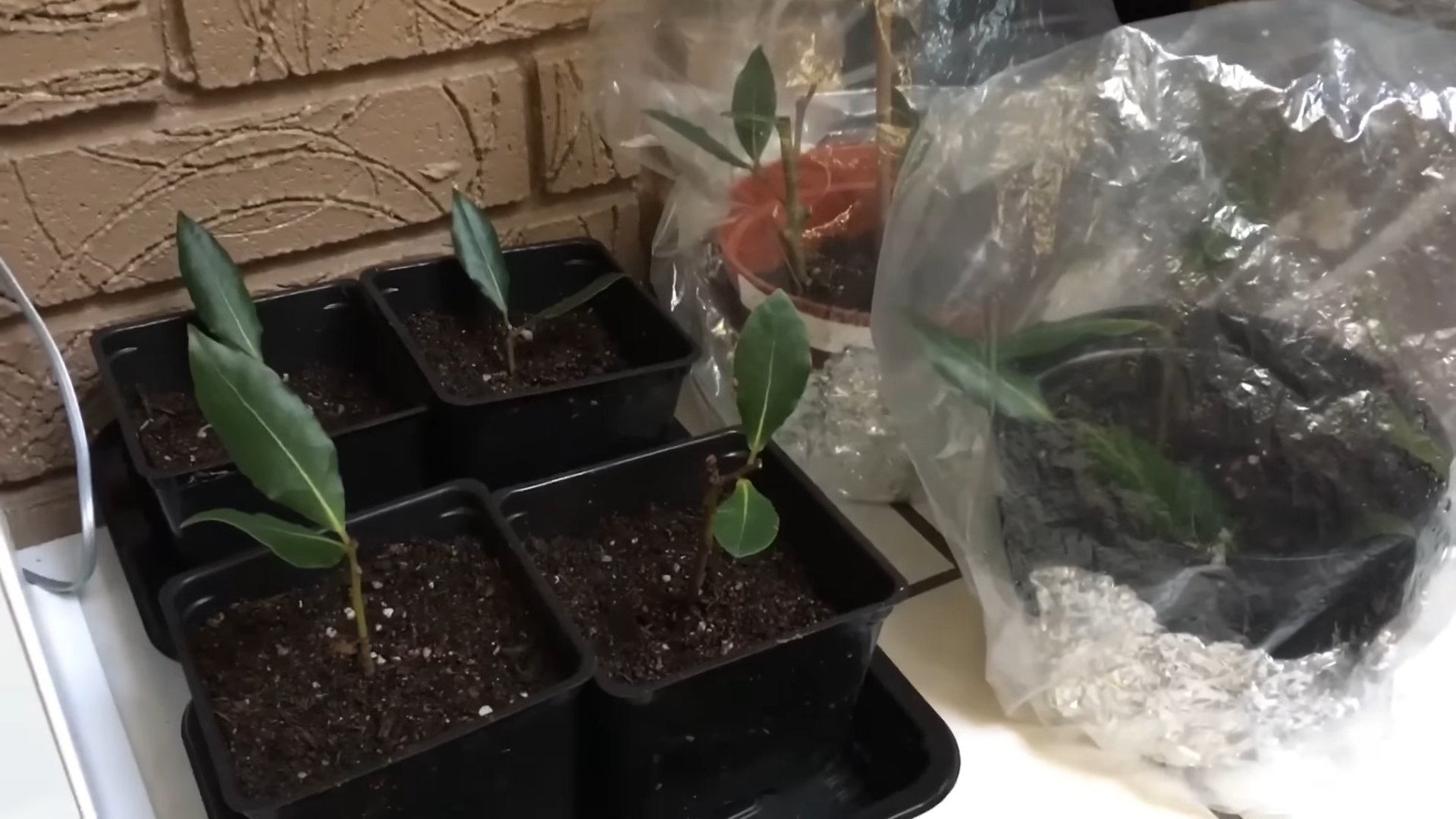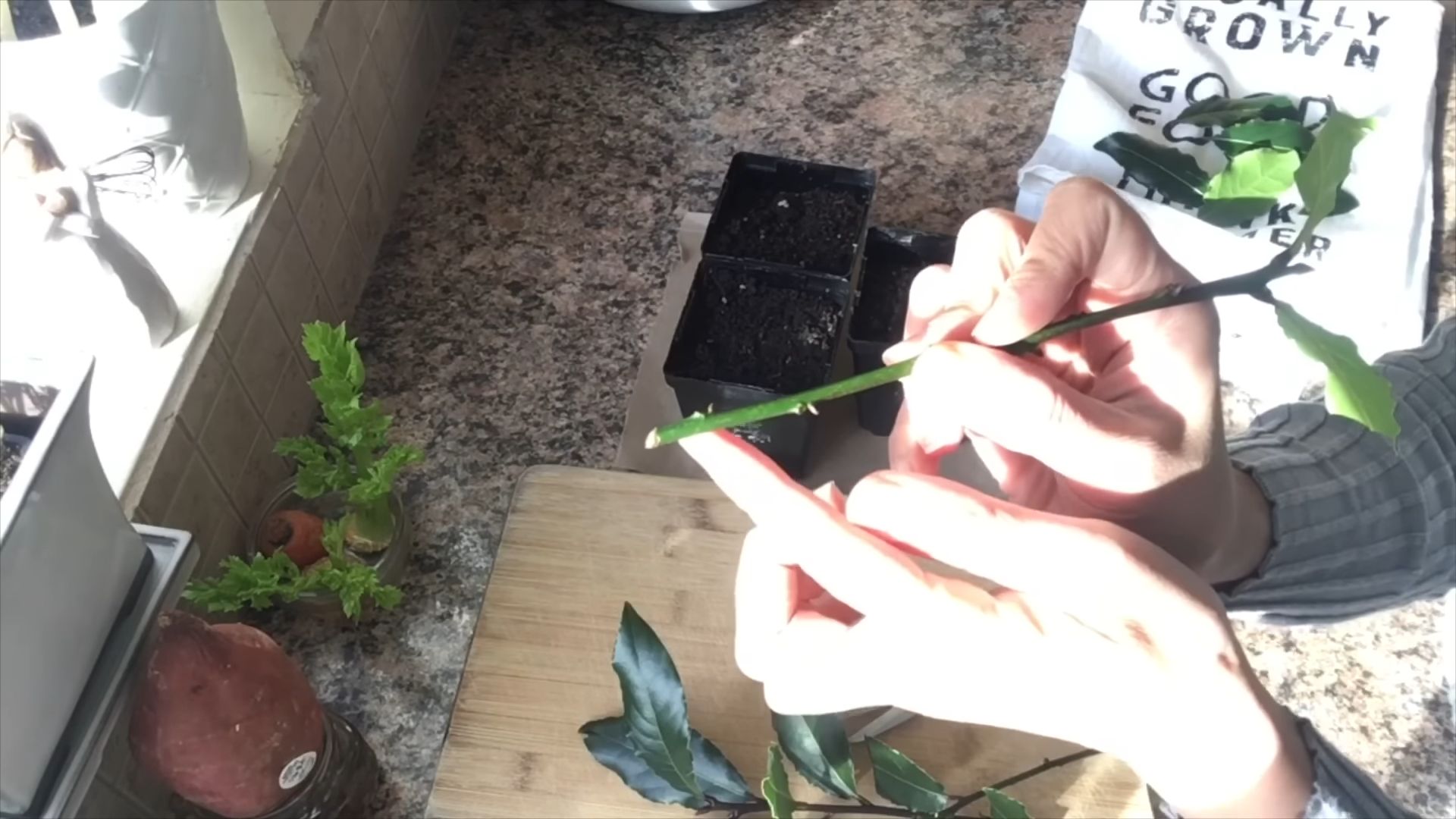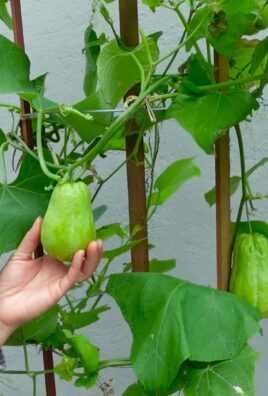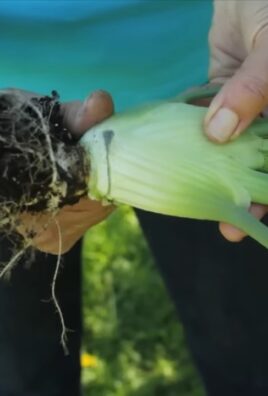Bay Leaf Propagation Cuttings: Ever dreamed of having an endless supply of fresh bay leaves right at your fingertips? Imagine never having to buy those dried-up, flavorless leaves from the grocery store again! Well, you’re in luck because I’m about to share a simple, yet incredibly rewarding, DIY trick: propagating bay leaf plants from cuttings.
Bay laurel, or Laurus nobilis, has a rich history, dating back to ancient Greece and Rome, where it was a symbol of victory, honor, and culinary excellence. The leaves were woven into wreaths for heroes and emperors, and their aromatic flavor graced countless dishes. Today, the bay leaf continues to be a staple in kitchens worldwide, adding depth and complexity to soups, stews, sauces, and more.
But why rely on store-bought bay leaves when you can easily grow your own? Learning bay leaf propagation cuttings is not only cost-effective but also incredibly satisfying. It’s a fantastic way to expand your herb garden, share plants with friends, and enjoy the freshest, most flavorful bay leaves imaginable. Plus, it’s a surprisingly easy process that anyone can master, even if you don’t have a green thumb. I’m here to guide you through each step, ensuring you’ll be snipping and rooting your way to bay leaf abundance in no time!

Propagating Bay Laurel from Cuttings: A Gardener’s Guide
Hey there, fellow plant enthusiasts! Ever admired the fragrant leaves of a bay laurel tree and wished you could have one (or several!) of your own? Well, you’re in luck! Propagating bay laurel from cuttings is a rewarding DIY project that allows you to expand your herb garden without breaking the bank. It might seem a little intimidating at first, but trust me, with a little patience and the right guidance, you’ll be well on your way to growing your own bay leaf bounty. I’m going to walk you through the whole process, step-by-step, so you can confidently create new bay laurel plants from cuttings.
What You’ll Need: The Essential Supplies
Before we dive into the nitty-gritty, let’s gather our supplies. Having everything ready beforehand will make the process smoother and more enjoyable. Here’s what you’ll need:
* A Healthy Bay Laurel Tree: This is your source for cuttings! Choose a mature, healthy tree that’s free from pests and diseases.
* Sharp, Clean Pruning Shears or Knife: Sharpness is key to making clean cuts that heal quickly. Sterilize your tools with rubbing alcohol to prevent the spread of diseases.
* Rooting Hormone: This isn’t strictly necessary, but it significantly increases your chances of success. I highly recommend using it!
* Rooting Medium: A well-draining mix is crucial. I like to use a combination of perlite and peat moss (or coco coir as a sustainable alternative) in equal parts. You can also use a commercial seed starting mix.
* Small Pots or Containers: Choose pots that are about 3-4 inches in diameter. Make sure they have drainage holes!
* Clear Plastic Bags or a Humidity Dome: These will help create a humid environment, which is essential for rooting.
* Spray Bottle: For misting the cuttings.
* Water: Preferably distilled or rainwater.
* Labels: To keep track of your cuttings (optional, but helpful!).
Taking the Cuttings: The Art of Selection
The timing and method of taking cuttings are crucial for success. Here’s what I’ve learned:
* Timing is Key: The best time to take bay laurel cuttings is in late spring or early summer, when the plant is actively growing.
* Choose the Right Stems: Look for semi-hardwood stems. These are stems that are neither too soft and green nor too woody and brown. They should be flexible but not floppy.
* Cutting Length: Aim for cuttings that are about 4-6 inches long.
* Making the Cut: Use your sharp, sterilized pruning shears or knife to make a clean cut just below a node (the point where a leaf or branch grows from the stem).
* Remove Lower Leaves: Strip off the leaves from the bottom half of the cutting. This will prevent them from rotting in the rooting medium and encourage root development.
Step-by-Step Propagation Guide
Now for the exciting part! Let’s get those cuttings rooted.
1. Prepare the Rooting Medium: Mix your perlite and peat moss (or coco coir) in a bowl. Moisten the mixture thoroughly, but don’t let it get soggy. It should be damp, not dripping.
2. Fill the Pots: Fill your small pots with the prepared rooting medium. Gently firm the medium down, but don’t pack it too tightly.
3. Apply Rooting Hormone: Dip the cut end of each cutting into the rooting hormone powder or liquid. Make sure to coat the bottom inch or so of the stem. Tap off any excess powder.
4. Plant the Cuttings: Use a pencil or your finger to create a hole in the rooting medium in each pot. Gently insert the cutting into the hole, making sure that the bottom nodes (where you removed the leaves) are buried in the medium.
5. Water the Cuttings: Water the cuttings gently to settle the rooting medium around the stems.
6. Create a Humid Environment: Place each pot inside a clear plastic bag or under a humidity dome. This will help maintain high humidity levels, which are essential for rooting. If using plastic bags, make sure to prop them up with skewers or straws to prevent them from touching the leaves.
7. Provide Indirect Light: Place the cuttings in a warm location with bright, indirect light. Avoid direct sunlight, which can scorch the leaves.
8. Maintain Humidity: Mist the cuttings regularly (every day or two) to keep the humidity levels high. If you’re using plastic bags, you may not need to mist as often.
9. Check for Rooting: After a few weeks (usually 4-8 weeks), gently tug on the cuttings to check for root development. If you feel resistance, it means roots have formed! You can also gently remove a cutting from the pot to inspect the roots.
10. Acclimatize the Rooted Cuttings: Once the cuttings have developed a good root system, gradually acclimatize them to lower humidity levels. Start by opening the plastic bags or removing the humidity dome for a few hours each day, gradually increasing the time over a week or two.
11. Potting Up: Once the cuttings are acclimatized, you can pot them up into larger pots with a well-draining potting mix.
Caring for Your New Bay Laurel Plants
Congratulations! You’ve successfully propagated bay laurel from cuttings. Now, let’s talk about how to care for your new plants:
* Light: Bay laurel prefers full sun to partial shade.
* Watering: Water regularly, especially during dry periods. Allow the soil to dry out slightly between waterings.
* Fertilizing: Fertilize your bay laurel plants in the spring and summer with a balanced fertilizer.
* Pruning: Prune your bay laurel plants regularly to maintain their shape and encourage bushier growth. You can also harvest leaves for cooking as needed.
* Pests and Diseases: Bay laurel is generally pest and disease resistant, but keep an eye out for common pests like aphids and scale.
Troubleshooting: Common Issues and Solutions
Even with the best intentions, things don’t always go as planned. Here are some common issues you might encounter and how to address them:
* Cuttings Rotting: This is usually caused by overwatering or poor drainage. Make sure your rooting medium is well-draining and avoid overwatering.
* Cuttings Not Rooting: This could be due to several factors, including poor quality cuttings, insufficient humidity, or lack of rooting hormone. Try taking cuttings from a different part of the plant, increasing the humidity, or using rooting hormone.
* Leaves Turning Yellow: This could be a sign of overwatering, underwatering, or nutrient deficiency. Adjust your watering schedule and fertilize your plants as needed.
Extra Tips for Success
Here are a few extra tips that I’ve found helpful over the years:
* Use a Heat Mat: A heat mat can help speed up the rooting process by providing bottom heat.
* Be Patient: Rooting cuttings can take time, so don’t get discouraged if you don’t see results immediately.
* Experiment: Don’t be afraid to experiment with different rooting mediums and techniques to find what works best for you.
* Keep Records: Keep track of your successes and failures so you can learn from your mistakes.
Enjoy Your Homegrown Bay Leaves!
Growing bay laurel from cuttings is a rewarding experience that allows you to expand your herb garden and enjoy the fresh, aromatic flavor of homegrown bay leaves. With a little patience and the right guidance, you can successfully propagate your own bay laurel plants and enjoy them for years to come. Happy gardening!

Conclusion
So, there you have it! Mastering bay leaf propagation cuttings is not just a fun gardening project; it’s a gateway to a constant supply of fresh, aromatic bay leaves right at your fingertips. Imagine never having to run to the store for that essential ingredient again, knowing you cultivated it yourself. Beyond the convenience, propagating your own bay leaf plants offers a unique connection to nature and a deep sense of accomplishment.
This method, while requiring patience, is surprisingly straightforward and rewarding. The satisfaction of watching a tiny cutting develop into a thriving plant is unparalleled. Plus, you’re essentially creating a clone of your favorite bay leaf variety, ensuring you always have the specific flavor profile you love.
Don’t be afraid to experiment! Consider trying different rooting hormones to see which yields the best results in your specific climate and growing conditions. You could also explore different potting mixes, perhaps incorporating more perlite for enhanced drainage or adding a touch of compost for extra nutrients. Another variation is to try propagating in different seasons. While spring and early summer are generally considered ideal, some gardeners have success with late summer cuttings as well. Just be sure to adjust your care routine accordingly, providing extra protection from extreme temperatures.
Think about the possibilities: gifting rooted bay leaf plants to friends and family, expanding your herb garden with multiple bay leaf varieties, or even starting a small-scale bay leaf business. The potential is truly limitless.
We understand that propagation can sometimes feel daunting, but we urge you to give it a try. The process is more forgiving than you might think, and the rewards are well worth the effort. Remember to provide consistent moisture, adequate warmth, and indirect sunlight, and you’ll be well on your way to success.
We’re incredibly excited to hear about your experiences with bay leaf propagation cuttings! Please share your successes, challenges, and any tips you discover along the way in the comments section below. Your insights could be invaluable to other aspiring bay leaf propagators. Let’s build a community of passionate gardeners, all sharing the joy of growing our own bay leaves. Happy propagating!
Frequently Asked Questions (FAQs)
Why should I propagate bay leaf plants from cuttings instead of buying them?
Propagating from cuttings offers several advantages. First, it’s often more economical than purchasing established plants, especially if you want multiple bay leaf plants. Second, you can ensure you’re getting a specific variety of bay leaf that you know and love. Store-bought plants may not always be clearly labeled, and the flavor can vary. Third, propagation is a rewarding and educational experience that connects you more deeply to the plant. Finally, it allows you to create clones of your existing bay leaf plant, preserving its unique characteristics.
What is the best time of year to take bay leaf cuttings?
The ideal time to take bay leaf cuttings is typically in the spring or early summer, when the plant is actively growing. This is when the cuttings are most likely to root successfully. However, you can also try taking cuttings in late summer, although the success rate might be slightly lower. Avoid taking cuttings during the dormant winter months.
What type of cutting should I take?
Take semi-hardwood cuttings, which are stems that have started to mature but are not yet fully woody. These cuttings should be about 4-6 inches long and have several leaves. Remove the lower leaves to prevent them from rotting when inserted into the rooting medium.
What is the best rooting medium for bay leaf cuttings?
A well-draining rooting medium is essential to prevent rot. A mixture of perlite and peat moss is a popular choice, as it provides good aeration and moisture retention. You can also use a commercial rooting mix specifically designed for cuttings. Avoid using garden soil, as it can be too heavy and may contain pathogens.
Do I need to use rooting hormone?
While not strictly necessary, rooting hormone can significantly increase the success rate of bay leaf propagation cuttings. It contains auxins, which stimulate root development. Dip the cut end of the cutting into the rooting hormone powder or liquid before inserting it into the rooting medium.
How often should I water the cuttings?
Keep the rooting medium consistently moist but not waterlogged. Water when the top inch of the medium feels dry to the touch. Avoid overwatering, as this can lead to root rot. A spray bottle can be helpful for misting the cuttings and maintaining humidity.
How much light do the cuttings need?
Bay leaf cuttings need bright, indirect sunlight. Avoid placing them in direct sunlight, as this can scorch the leaves. A north- or east-facing window is often ideal. You can also use a grow light if you don’t have access to sufficient natural light.
How long does it take for bay leaf cuttings to root?
It typically takes several weeks to a few months for bay leaf cuttings to root. Be patient and continue to provide consistent moisture and warmth. You can gently tug on the cuttings after a few weeks to check for root development. If you feel resistance, it’s a good sign that roots have formed.
How do I know when the cuttings are ready to be transplanted?
Once the cuttings have developed a healthy root system, they are ready to be transplanted into individual pots. Choose pots that are slightly larger than the root ball and use a well-draining potting mix.
What kind of care do newly transplanted bay leaf plants need?
Newly transplanted bay leaf plants need consistent moisture and protection from extreme temperatures. Water regularly and fertilize with a balanced fertilizer every few weeks. Gradually acclimate the plants to outdoor conditions before planting them in the garden.
Can I propagate bay leaf plants in water?
While it’s possible to propagate bay leaf cuttings in water, the success rate is generally lower than with rooting medium. Cuttings rooted in water tend to develop weaker root systems and may be more susceptible to transplant shock. If you choose to propagate in water, change the water every few days to prevent bacterial growth.
What are some common problems with bay leaf propagation cuttings and how can I fix them?
Common problems include root rot, leaf drop, and lack of root development. Root rot is usually caused by overwatering. To prevent it, ensure the rooting medium is well-draining and avoid overwatering. Leaf drop can be caused by insufficient humidity or temperature fluctuations. Increase humidity by misting the cuttings regularly or placing them in a humidity dome. Lack of root development can be caused by insufficient warmth, light, or rooting hormone. Ensure the cuttings are receiving adequate warmth and light, and consider using rooting hormone.
Can I use bay leaves from my propagated plant for cooking?
Yes, once your propagated bay leaf plant is established and has grown sufficiently, you can harvest the leaves for cooking. Allow the plant to mature for at least a year before harvesting leaves. Pick mature, healthy leaves for the best flavor.
How do I care for my mature bay leaf plant?
Mature bay leaf plants prefer well-draining soil and full sun to partial shade. Water regularly, especially during dry periods. Fertilize with a balanced fertilizer in the spring. Prune the plant to maintain its shape and size. Bay leaf plants are relatively pest-resistant, but watch out for common garden pests like aphids and scale.




Leave a Comment